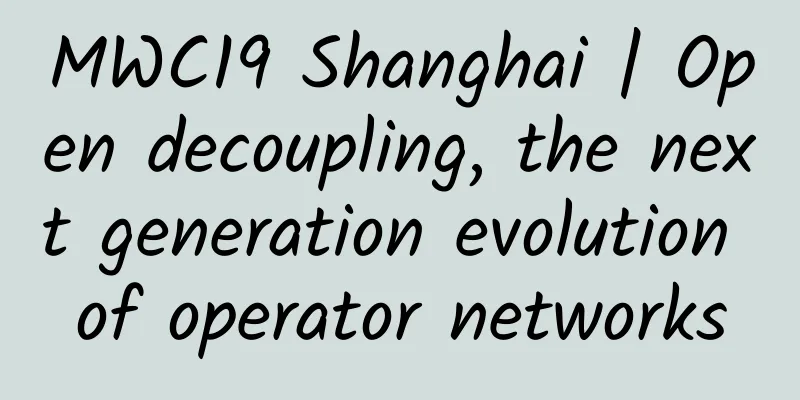Hyperscale Data Centers vs Micro Data Centers

|
Some say the data center of the future is very different, but maybe something else is going on. On the surface, hyperscale data centers and micro data centers seem to be somewhat out of touch with people's ideas about the future of data centers. But the reality is that they are opposite sides of the same coin, or at least complementary concepts. The common goal of these two technologies is to effectively and efficiently deliver data and applications whenever and wherever they are needed. On-demand services can improve enterprise productivity, enhance people's work and living standards, and enable the development of the Internet of Things. But in order for this end-to-end process to work properly, all links need to be in place. Whether it is a hyperscale data center or a micro data center, it is an important part of providing information to the end user.
Let’s first look at the current concept of hyperscale data centers. Massive scalability The goal of adopting this model is to provide a single computing architecture that can be massively scalable. It can combine virtualization, software-defined data centers, software-defined networks, software-defined storage, and standardized computing, network, and storage nodes to enable users to continuously expand the IT load of the data center to meet demand. Currently, when people think of hyperscale data centers, they think of cloud services provided by giants like Amazon, Facebook, Google, and Microsoft, and it is a reasonable assumption that because they provide “cloud computing” services, they need to be able to provide this type of growth and support for the hyperscale data center concept. The basic design of a hyperscale data center needs to consider the three resources that need to scale: compute, network, and storage. New deployments should be able to start small, building a basic configuration of servers, storage, and network that can be added as needed, allowing the data center to grow with demand. This means that hyperscale is not just for those with huge infrastructure, and its basic concepts can be applied to any size data center or deployment. This also means that the data center infrastructure does not have to scale up or down at the same time, only the infrastructure that must be adjusted to meet the enterprise requirements can be grown. Because the software-defined data center is decoupled from the underlying infrastructure, there is no fixed relationship between the various components. Most importantly, a hyperscale data center is not defined by its size, but by its architecture and growth capabilities. Hyperscale data centers have grown rapidly in the past two to three years and are often thought of as being limited to data centers of huge size, but this idea may be a bit too simplistic. Enter the Edge Data Center While large-scale data center deployments get all the attention, the greatest growth in data center development appears to be in edge data centers, which are smaller facilities located at the “edge” of the network where end users and devices require fast responses and do not want the latency associated with routing to centralized data centers. In many ways, what was once the edge has moved to front and center, thanks to the rise of digital services. Smaller data centers are being built in cities that were not considered suitable for Tier 1 data center facilities. These cities are considered prime locations for opening new data centers. Although these are smaller data center facilities, they are the first to be developed by the hyperscale model. Because people's needs start small and continue to grow. Many providers/operators of such facilities have begun to deploy their own cloud computing networks for their customers, which complements the grid density capabilities of the hyperscale model very well. These high-capacity edge data centers, operating in hyperscale mode, are able to meet the service needs of enterprises and the expansion of the Internet of Things. These edge data centers will become particularly important as the number of connected devices continues to increase and the availability of backhaul bandwidth grows at a slower rate. Hyperscale and micro change data center design So, where will micro-computing be used? In markets where the cost of backhaul bandwidth remains significant, there will always be an overall demand for the ability to shorten the path that data must travel to reach the end consumer. There will also continue to be a need to minimize response time between servers and end users in order to provide a high-quality user experience. Of course, it is not realistic to always have a good geographical location where data centers of any significant size and capacity can be deployed. Two approaches to miniaturization Vendors seem to view micro data centers in two ways. The first is to cut through the current model. This gives a layered view of data centers and their traffic, with large data centers at the top of the pyramid, edge data centers in the middle, and micro data centers at the bottom. All information eventually filters down the pyramid, but only the lower layers filter out the required information. This approach builds on current investments in data centers and allows specialized micro data centers to be deployed as needed. The second approach is the multi-node model of micro data centers, where individual micro data centers can effectively act as individual nodes in a hyperscale facility without feeding back into the central facility. For example, data and services can be stripped across multiple small data centers, providing the level of resiliency and availability that would require specialized services and/or facilities in the current data center delivery model. This view needs to be built almost from scratch, as in this model, the primary purpose of the existing data center is to eventually deliver data and applications that will be migrated to the multi-node micro data center. Design and Delivery While the hyperscale data center concept represents a significant change in the underlying architecture of data center IT workload components, the micro data center represents a change in the way facility infrastructure is delivered. The focus of micro data center design is more about what goes into the package. Power and cooling equipment must be delivered to the IT load hardware in a smaller package (usually self-contained), and this defines the constraints and limitations on the design of a micro data center. However, there is no reason why the concepts that define hyperscale facilities cannot be applied to some extent to the actual compute, storage, and network components of a micro design. Planning the next generation of data center designs will require consideration of all aspects of information usage and delivery. Building a flexible data center infrastructure to meet the flexibility required to drive business growth may require consideration of many different architectural issues in your design choices. |
<<: What are the interference protection measures for the computer room's integrated wiring system?
>>: Ruijie helps Dashilan Commercial Street build a smart Wi-Fi system
Recommend
China leads the world in quantum technology patents
[[388060]] Quantum technology has become the comm...
"Smart cars" drive on "smart roads", Lenovo and Intel work together to enable the coordinated development of vehicles, roads and clouds with 5G+AI computing power
On May 18, Lenovo and Intel jointly demonstrated ...
I encountered message accumulation, but it is not a big problem
[[431068]] Hello everyone, I am captain. If you f...
ExtraVM: 1Gbps unlimited traffic VPS starting at $3.5 per month, AMD Ryzen series, multiple computer rooms available
ExtraVM is a foreign VPS service provider founded...
Friendhosting 50% off promotion, VPS half-year payment starts from 7.5 euros
Friendhosting has launched a promotion for "...
The results of 5G centralized procurement have been released one after another. How to divide the “cake”?
As all parties continue to increase their investm...
Introduction to various types of network cables, what are Category 5 and Category 6 cables?
1. Network cable overview The network cable usual...
2024 Cybersecurity Service Application Status Survey: Service Quality and Effectiveness Are the Biggest Application Challenges
As cybersecurity threats continue to evolve and e...
Network literacy: Understanding DNS in one article
[[328762]] Hello everyone, I am Brother Ming. Dur...
5G paves the way for new IoT projects
Since its major launch two years ago, 5G has cont...
The Ministry of Industry and Information Technology issued an urgent warning: fraud using "number portability" has been launched
On December 6, the Ministry of Industry and Infor...
Forecast of cellular network development trends in 2017
[[183195]] The new year of 2017 will continue the...
Goodbye, Citrix! Domestic cloud desktop players reshuffle, who can eat more cake?
Recently, another foreign giant announced that it...
PacificRack: $8/year KVM-512MB/10GB/1TB/Los Angeles data center
PacificRack has launched the Winter Sales promoti...
There are two important factors that affect network speed: network bandwidth and network latency!
With the popularization of the Internet, users pa...









